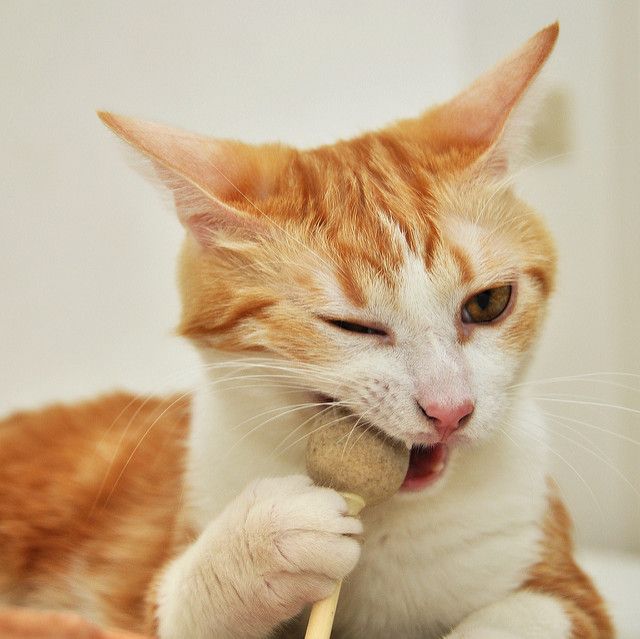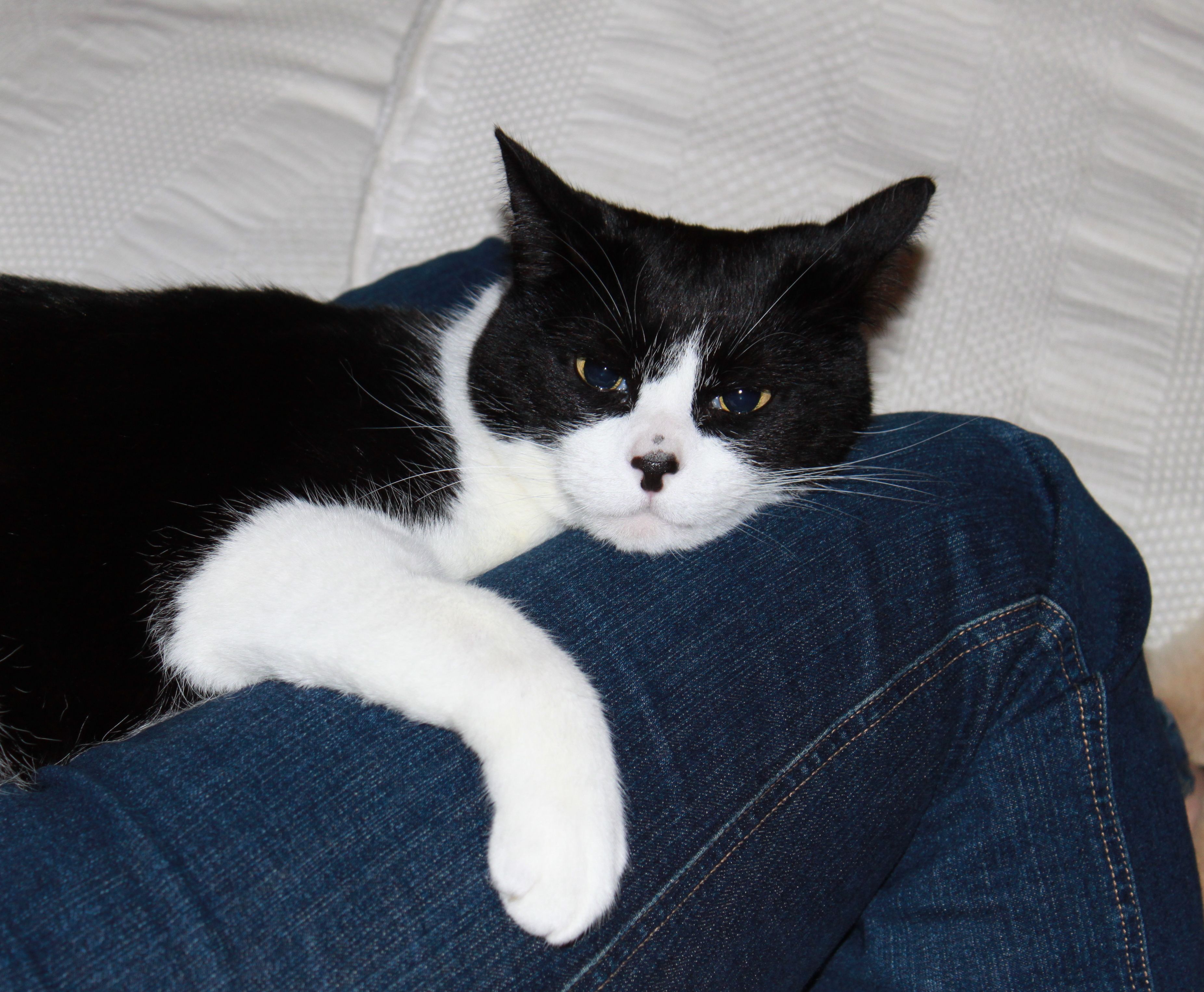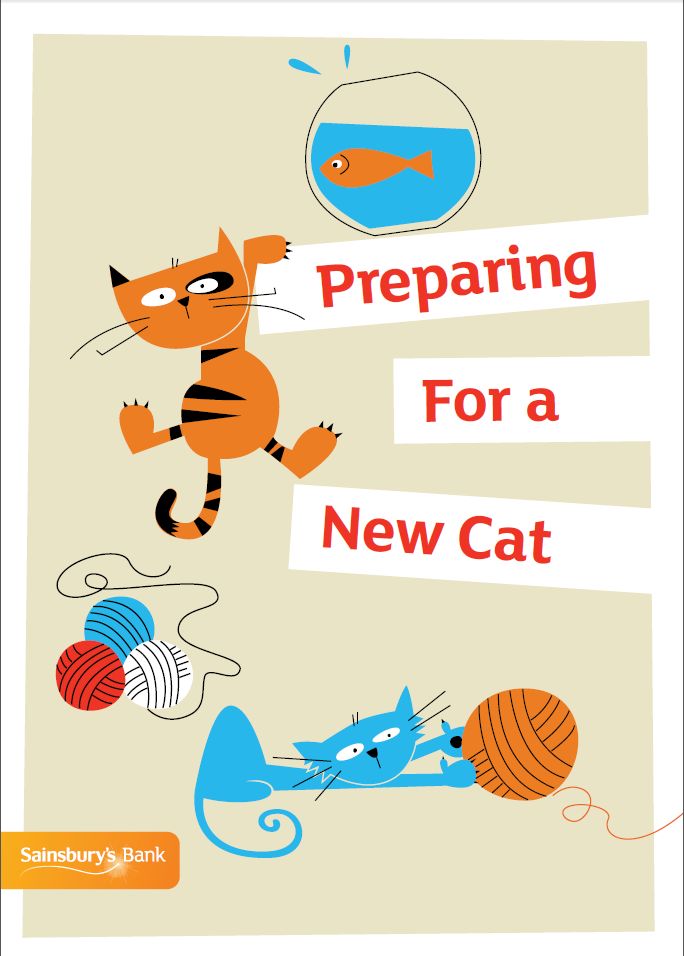
We sell a range of gorgeous and exclusive designer cat and kitten collars in our Cat Shop including diamante, real Swarovski and fabric handmade cat collars. Here’s some information and advice on cat collar fitting and use.
1. Why should my cat wear a collar in the first place?
Good question! A cat collar can help with all sorts of things in a kitty’s life, and we only ever recommend a safety cat collar that will allow your kitty to break free and escape if it gets caught or trapped.
a) Outdoor cats
Outdoor cats live a very free and carefree life. Because we don’t keep an eye on them 24 hours a day, unlike a dog, we’re not sure where they go, what they do and where they travel to. If a cat gets lost or even if he ventures into territory further away from your home, people will see that your cat belongs to someone and is owned and has a home somewhere and is not a stray or abandoned. A cat collar will also provide the vehicle for an ID tag with contact details for you so that your cat can be checked for an owner and if needs be returned to you quickly and easily.
b) Indoor cats
We also strongly advise that indoor cats wear a collar. Indoor cats can escape and they will be vulnerable and confused in the outdoor world because they don’t know their way around, unlike a cat that is used to the outdoors. He may also go to find somewhere to hide because he is fearful, gets lost and then can’t find his way back home. An indoor cat with a cat collar and ID tag will give him the best chance to be returned to you quickly and easily.
c) Micro chipped cats
Even micro chipped cats should wear a collar to make it obvious to people that your cat is owned and belongs to someone. Micro chipping, although a necessity, isn’t obvious, and some people may not be aware of micro chipping and that a visit to the vet is required to identify the cat’s owner. It may not occur to a person that a cat will be micro chipped and they wrongly assume that the cat is a stray. So to be on the safe side we thoroughly recommend having a collar on your micro chipped cat.
2. What is a safety breakaway collar?
A safety breakaway collar, or quick release cat collar, is fitted with a release clasp that will break apart when the collar is pulled on with enough force. This release action allows your kitty to break free if they become trapped or caught on something. Our release collars are sturdy however they will break apart and free your cat with enough force if your kitty becomes caught up.
3. How do I measure my cat for its new collar?
Currently we offer a standard size which is between 7.5 inches to 10.5 inches. Most cats will fit the standard size. To measure your cat’s neck you can measure your cat’s existing collar if he has one or use a strip of paper or a tape measure and allow room for 1-2 fingers between your cat’s neck and the tape measure. If your cat has a buckle collar, then exclude the part that overlaps and measure up to the buckle hole that fits.
All of our cat collars are adjustable, either by buckle and holes or an adjustable glide on our fabric collars.
4. How do I fit my cat’s collar? – Fabric safety breakaway collars
Please ensure that your kitty’s collar is fitted correctly. For it to be as safe as possible there should be room to fit 1-2 fingers between the collar and your cat’s neck so that it’s not too tight and gives your kitty room to move. It should also not be too loose so that your cat’s paws or legs can get caught in the collar and get trapped under your cat’s armpit. This happened to our cat Dolly because it was too loose. We adjusted her collar so that it’s a comfortable fit and not too loose.
5. How do I fit my cat’s collar? – Elasticated safety cat collar
If you opt for an elasticated safety collar this will have a short piece of elastic fitted into the collar to allow your kitty to escape. To fit an elastic safety collar correctly, there should be room to fit 1-2 fingers between the collar and your cat’s neck so that it’s not too tight and gives your kitty room to move. Stretch the elastic to the maximum and ensure that it is loose enough including the stretched elastic to ensure that your kitty can escape if it gets caught. Some elastic fitted is very short, so there needs to be enough room when the elastic is stretched to its maximum to allow your cat’s head to slip out of the collar. It is also very important that the collar is not fitted too loose in case your cat’s paws or legs get caught up in the collar.
6. Adjusting and checking your cat’s collar
You should regularly check your cat’s collar – every day is best – to ensure that it is fitting well and doesn’t become too slack. A young cat will also be growing so please check the collar to ensure it’s not becoming too tight as this will be uncomfortable. The perfect fitting collar should be comfortable enough for your kitty to wear it without being bothered or irritated.
7. Charms and bells
Our charms are small and our bells are the perfect cat size so that they are not hanging too low or likely to get caught up on something. Oversized charms that dangle down from the cat collar can present a hazard and danger to your cat as they climb in and out of spaces and large tags or charms can get caught, so please beware of the size of charms when you buy them. Avoid charms on a key chain or fob as these are potentially hazardous to your kitty and could get stuck or caught on something.
Our bells are removable so if you don’t want a bell attached to your cat’s collar you can simply remove it. If you don’t want either a charm or bell, please let us know in the `Order Notes’ box on the right hand side when you check out. Similarly if you don’t want anything on your cat collar (i.e. split ring, bell or charm) then we can make them without so please let us know.
8. My cat doesn’t like wearing a collar. How can I get my cat used to wearing a collar?
Some cats will wear a collar with the minimum of fuss, and some cats will take a little more time to get accustomed to wearing a collar.
Some cats will not want to wear a cat collar and will resist and try to get it off, so you will need to get them used to their cat collar gradually and with a little patience. When you first try the cat collar on your cat, put it on indoors so that you can keep an eye on their behaviour. Because the cat collar will feel unfamiliar, they may do a number of gymnastic and athletic manoeuvres to get it off. If they do, remove the cat collar then simply put it back on them and repeat. If they becoming agitated then remove the cat collar completely and try again after a couple of hours. Try not to force the collar upon your cat as it will stress your cat out, as well as you!
It’s important that as you are getting your cat used to his collar, you reward your cat for keeping the collar on with treats and playing so that they associate you putting the collar on with a treat and it also distracts their attention away from the unfamiliar collar around their neck. Also try putting the cat collar on before meals. Eventually they will become accustomed to their new collar and wear it without noticing it.
9. Are cat collars suitable for kittens?
There can be problems with putting collars on kittens because they are so small, agile and can manoeuvre themselves inside out to get the collar off. Kittens are also very curious and agile getting into and climbing up and down all sorts of places so they could get caught up with a collar. International Cat Care suggests that you should try and get your kittens used to wearing a collar at 5 months old and no sooner, and you need to do this fully supervised with your kitty indoors. Watch your kitty’s behaviour and get him used to wearing a collar so that after 6 months old, when he can go outdoors he will be used to wearing a collar. When your kitten is growing you should continually check the fit of the cat collar so that it is not tight and rubbing against your kitty’s neck.
10. Why does my cat keep losing his collar?
If cats really don’t want to wear a collar, they will try to get it off at the first opportunity. If a cat isn’t used to the collar then keep trying to get him used to the collar and rewarding him with treats. Also check that it is fitted correctly and not too tight and uncomfortable as your cat may be resisting it because it feels uncomfortable.
At the end of the day, because you are buying a safety collar and a cat’s safety is paramount, it may well just break away or release when it gets caught whilst your cat is exploring and because of his normal feline activity. A breakaway / release collar will allow your cat to get away safely so this is a good thing compared to losing a collar that can be replaced. We don’t recommend tying or attaching additional elastic to the buckle of a cat collar to keep the collar on your cat as this could cause your cat to get entangled in the elastic with its neck, paws or legs. A safety breakaway collar is meant to break away quickly and cleanly. Tying another piece of elastic will be a risk to your cat’s safety and present additional problems to the cat if it is in a hazardous situation.
11. Do indoor cats need a cat collar?
We recommend it’s essential to keep a collar on an indoor cat. An indoor cat could escape your home and it will be vulnerable, disorientated and unfamiliar with its outdoor surroundings – more so than a cat that is used to the outdoors. He may also go to find somewhere to hide because he is fearful, gets lost and then can’t find his way back home. Having a cat collar with an ID tag and contact details for you is very important so that your cat can be returned safely and speedily to you and gives him the best chance should he escape.
12. Do micro chipped cats need a collar?
Micro chipping a pet is essential. We would also recommend having a collar for your cat even though he is micro chipped because not everyone will be aware that your cat is a) owned and b) micro chipped. If you have an ID tag on your cat it is much quicker and easier for someone to contact you. Micro chipping, although essential, isn’t obvious, and some people may not be aware of micro chipping and that a visit to the vet is required to identify the cat’s owner. It may not occur to a person that a cat will be micro chipped and they wrongly assume that the cat is a stray. If your cat has a collar, it will help people to realise that your cat is owned rather than a stray or abandoned and gives him the best chance if he gets lost.
We rescued a cat who found us and turned up in our back garden. He was cold and hungry and it was in the depth of a cold and freezing winter. He didn’t have a collar and we thought he was abandoned and a stray. We fed, watered and gave him a comfortable bed in our home for three days until he looked better. When we took him to the vets he luckily had a micro chip and was returned to his owner who had moved some distance away. If this cat had had a collar and tag on, we would have known instantly that he was owned and lost – a long way from home – and would have contacted the owners instantly. Our cats are micro chipped and also wear a collar.
13. Should I buy my cat a flea collar?
We have used flea collars in the past with our cats and they haven’t been effective at all. Some flea collar chemicals can be toxic to cats and cause illness and irritation. It is best to buy a proper flea treatment prescribed by your vet who will know your cat’s health history.
14. My cat is losing hair under the collar
Some cats are very sensitive and may have a skin condition or allergies. If you have any concerns, and your cat is losing hair or there is redness a rash, sores or broken skin, then please seek advice and help from your vet to find out what the problem is. Our cat Luca gets a skin condition, rather like Eczema in humans, during the summer months and starts losing hair and getting rashes and sores. He has to take medication for it, and around September onwards he is fine until the next year when it starts again. Sometimes cats will become bald or lose fur under their collar and it remains like this but isn’t painful or irritating to your cat. You will need to keep an eye on your cat’s neck and take your cat to the vet to get it checked out. If the problem worsens and the collar is irritating, painful and uncomfortable for your cat to wear then remove it completely and if your cat isn’t micro chipped you will need to micro chip him.
Answers to questions about our cat and kitten collar products
15. Can I order my cat collar without bells, charms or the ring?
Your cat collar will be made to order, so you can have it made how you like i.e. without the split ring, bell and/or charm or just with the metal split ring. Please let us know in the`Order Notes’ box on the right hand side when you check out
16. I want to return the cat collar – what do I do?
You are welcome to return your cat collar to us in an unworn and resalable condition (try it on first indoors to see if it fits and your kitty likes it). Please return the cat collar within 14 days of you receiving it and we will refund you. The buyer will need to pay the return postage.
17. My cat collar order is lost in the post – what do I do?
On the rare occasion that a collar gets lost in the post, we advise to wait 15 days after dispatch. This is because Royal Mail stipulates that 15 days is the time period they consider an item to be lost in their mail network. If after 15 days you haven’t received your order, please contact us and we will dispatch a replacement collar to you immediately with no postage charge.
18. Are your cat collars washable?
All of our fabric cat collars are washable. You can also spot wash them by rubbing gently on the stain with washing up liquid or hand soap may also do the trick.
If you need to wash the collar, remove the bell and charm from the split ring and place the collar inside a sock. We recommend hand washing in cool water with a very mild detergent such as a small squirt of washing up liquid or a small amount of sensitive, mild washing powder as cats can be very sensitive to the chemicals in washing powders and gels. Rinse the cat collar thoroughly to remove any detergent and leave the cat collar to dry in a warm place such as an airing cupboard. When it is dry, check the fit and re-adjust to fit your cat if necessary, checking the safety buckle is straight. You can also iron your cat collar on a low heat, we recommend using an ironing cloth or sheet to iron your collar gently.







